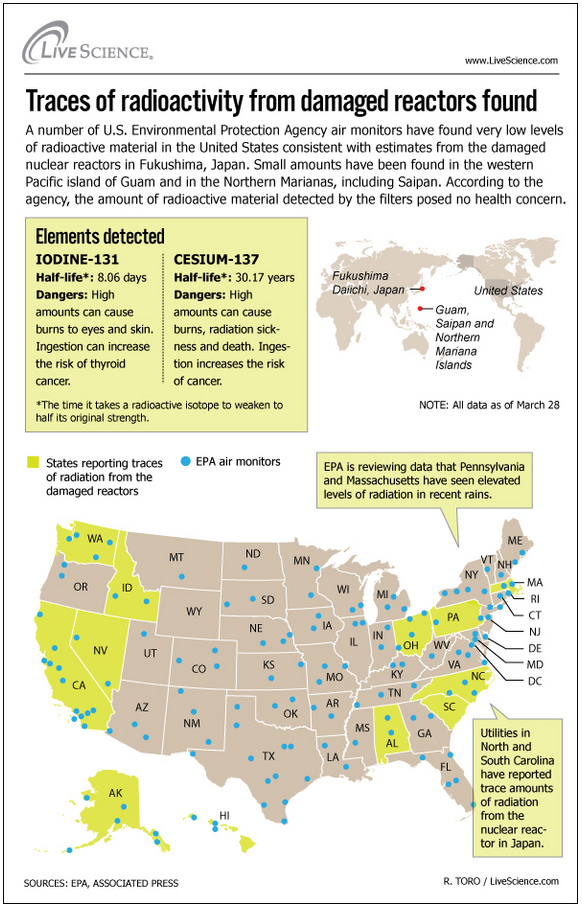
 There may be a new danger in the United States as a result of the earthquake and ensuing tsunami that struck Japan on March 11.
There may be a new danger in the United States as a result of the earthquake and ensuing tsunami that struck Japan on March 11.
The events that devastated the country caused a severe radioactive leak from the nuclear power plants in Japan. Small amounts of radiation have spread to the United States from Japan.
According to the Associated Press, trace amounts of radiation have been discovered in some parts of the United States including Washington, Massachusetts, Idaho, Nevada, California, Florida, Alaska, Hawaii and Pennsylvania. While the small amount of radiation found in the United States is not considered “dangerous,” many wonder if the spread of nuclear materials can be contained.
Iodine and Cesium radiation were discovered in Massachusetts. The radioisotope Iodine-131 was first detected on the West Coast and has moved East with the rain.
Megan Ferguson, an assistant professor of chemistry, does not think exposure to these chemicals will be harmful.
“Within a couple of months, danger from 131-I exposure is completely minimal, and it’s getting smaller all the time,” said Ferguson. “This radioactive isotope was the primary compound released.”
Iodine-131 has a very short half-life and is used in medical treatments here in the United States, according to the Associated Press.
Ferguson said she believes the real danger is Cesium-137.
“There has been some talk of Cesium-137, which has a much, much longer half life, around 30 years,” she said. “So it stays dangerous for a long time, and if it were to get spread around then the danger would be much more relevant.”
Very low amounts of Cesium-137 have been found in milk from Vermont, according to the Environmental Protection Agency (EPA).
The EPA does not believe that the Cesium-137 is related to the Japan disaster. Even if it was, the amount is so small that it will not affect humans.
Pamela St. John, an associate professor of chemistry, said that in order to prevent the radiation from spreading they need to isolate the reaction.
“I believe they have had difficulty doing this because the containers are leaking from damage from the earthquake and because there is an enormous amount of heat being generated in the reactors,” said St. John.
St. John does not expect harmful amounts of radiation to reach the United States.
“There are the used fuel rods that contain products of the nuclear reaction. So, I don’t know if it’s possible to stop the reaction however, if the reaction is contained, it will no longer be threatening,” she said.
The extent of the Japanese radiation that made its way across the Pacific is just a portion of the amount of radiation Americans are exposed to every day, according to the Associated Press.
While many wait to see what the crisis in Japan could have in store for the health of the planet, St. John believes the greatest effect this will have on Americans “will probably be the grief and sorrow felt for all of those suffering in Japan.”
